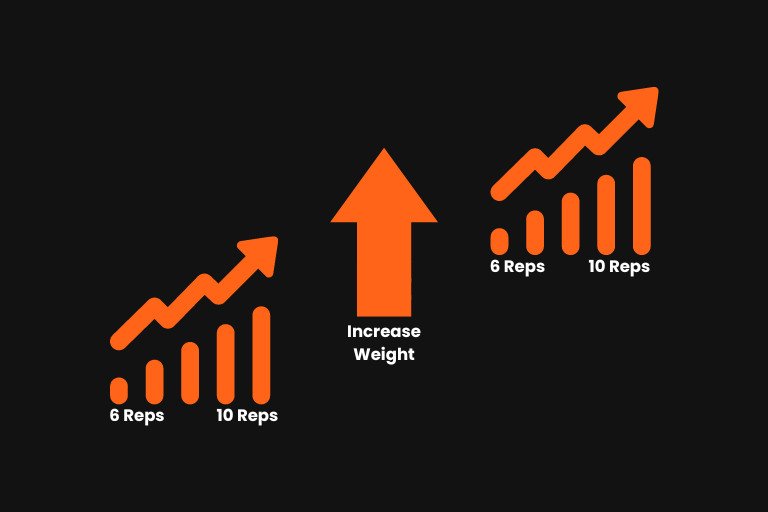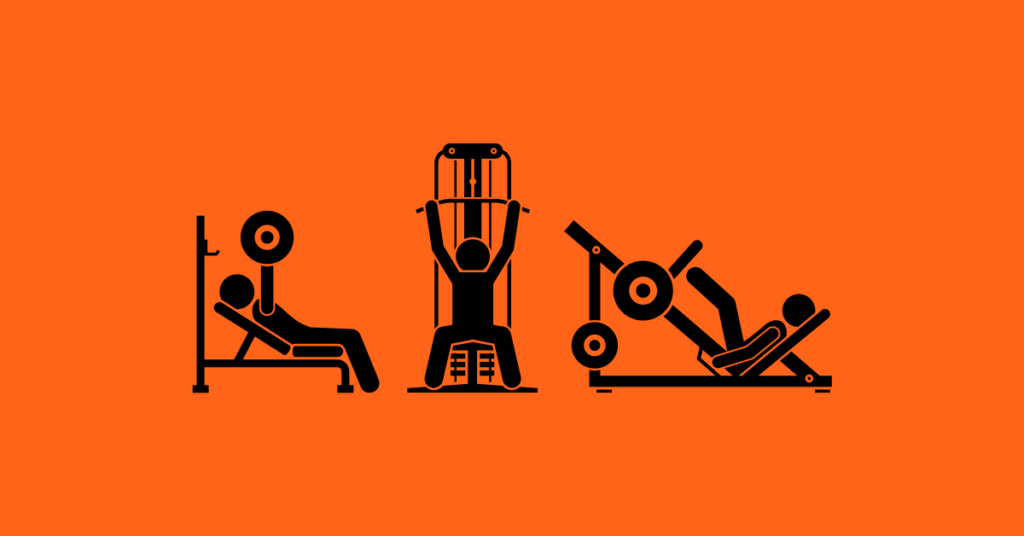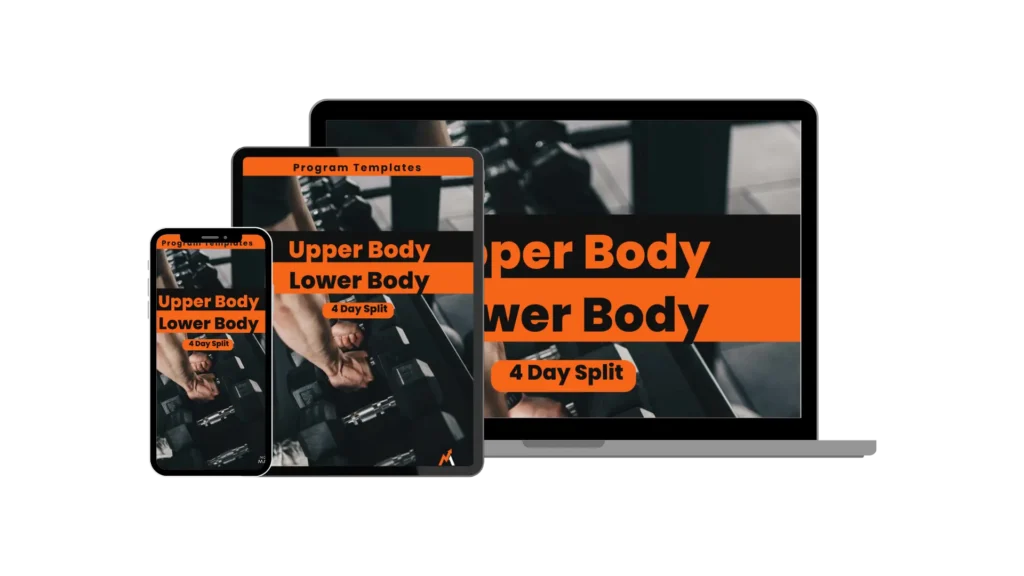The Double Progression Method
When our goal is to build muscle and strength in the gym, It is important to have a method or model of progression to ensure progressive overload is achieved. Progressive overload is a principle of strength training and must be a part of any effective strength training program. As the name suggests progressive overload is the process of progressively overloading the body with a stressor so that it is forced to adapt to the new stress and become stronger. In the case of hypertrophy or gaining muscle, this would involve placing greater mechanical tension on the muscles over time.
For strength training, this usually involves lifting heavier weights and performing more reps over time, although there are other ways progressive overload can be achieved. A well-designed strength training program will place enough stress on the body to force an adaptation to the stress, without being too great that we are unable to recover and come back stronger.
Using a progression model such as the double progression method gives us a system we can use to add weight and reps over time. It provides us with a way to measure our progress and decide when we should increase the weight we are lifting. It also gives us objective data so we know if progressive overload is being achieved, and therefore if our training or the workout program we are performing is productive or not.
What is The Double Progression Method?

As the name suggests the double progression method uses two variables to progress with. These are weight lifted and number of repetitions performed. We work with a given weight until we reach a certain number of repetitions, and then we increase to a higher weight.
To use the double progression method we first need to establish a rep range for a given exercise, for example, 6-10 or 8-12 reps. When we can hit the top of the rep range we increase the weight, with the goal of being able to hit at least the bottom of the rep range with the new heavier weight. The amount of weight added will usually be the smallest increment possible, however, this is not always the case and will depend on the exercise. The weight increase should be small enough that our reps do not drop out of the rep range (below the bottom of the rep range).
When To Increase Weight
We often see the recommendation of increasing weight once you can hit the top of the rep range for all your sets. This can be an effective strategy, particularly for beginners, however, we believe there is a better way. In reality, the likelihood of performing the same number of repetitions in all sets is small when working at the correct intensity, at a close proximity to muscular failure, as we recommend. We recommend increasing weight when you hit the top of the rep range in your first set.
When our sets are performed at a high intensity and are stimulative for muscle growth (hypertrophy) our reps should drop from set to set naturally due to fatigue. This is perfectly normal and is a good sign that the previous set was challenging and was an effective set. If we were able to perform all of our sets for the same number of reps, it means we would have likely held back a little on our previous sets, allowing us to manage fatigue and maintain our rep numbers across all of our sets.
This can still be an effective strategy if you are following a higher volume approach, however, for most people, we recommend a lower volume approach performing fewer sets at a higher intensity working at a closer proximity to muscular failure. This will result in your reps dropping between sets.
How Much Should We Increase The Weight By?
For most compound lifts moving up in weight by the smallest weight increment is a good idea, usually 2.5kg-5kg (around 5-10 lbs). Using larger weight increments may be tempting, and you may think you are progressing quicker, however, this may not be the best option. You may be able to progress well for a few weeks, however, this may not last long. Using a slightly slower rate of weight progression ensures we are less likely to plateau and leads to steady and consistent progress over time.
Larger weight increments can be used for larger muscle groups such as the legs, especially when using machines. The goal should be to add enough weight to lose some reps without dropping below the bottom of your chosen rep range.
Double Progression Method Example
Here is a double progression example using the Bench Press, with a rep range of 6-10 reps. The highlighted sets are where we increased weight as we hit the top of the rep range the week before.
| Week | Set 1 | Set 2 | Set 3 |
| 1 | 60 kg x 9 | 60 kg x 8 | 60 kg x 7 |
| 2 | 60 kg x 10 | 60 kg x 9 | 60 kg x 7 |
| 3 | 62.5 kg x 8 | 62.5 kg x 7 | 62.5 kg x 6 |
| 4 | 62.5 kg x 9 | 62.5 kg x 7 | 62.5 kg x 7 |
| 5 | 62.5 kg x 9 | 62.5 kg x 8 | 62.5 kg x 7 |
| 6 | 62.5 kg x 10 | 62.5 kg x 9 | 62.5 kg x 8 |
| 7 | 65 kg x 7 | 65 kg x 6 | 65 kg x 5 |
| 8 | 65 kg x 8 | 65 kg x 7 | 65 kg x 6 |
As you can see in this example we usually lose a rep between each set, although as you become stronger you may lose more than one rep. Sometimes you will not be able to perform another rep on the first set the following session or week, however, you may be able to perform more reps on set 2 or 3. Once you hit the top of the rep range on the first set we increase the weight for the next session.
Sometimes you may drop below the bottom of the rep range, for example on set three of week 7. This is not a problem, the set is still effective, and will still be stimulative for muscle growth (hypertrophy). If you are consistently falling below the bottom of the rep range when you add weight you may need to slow your progression down a little, in this case, you could wait until you hit the top of the rep range for sets 1 and 2 before increasing the weight.
If you find that you are likely to fall below the bottom of the rep range after your first set, for example, you have just moved up in weight and you barely hit the bottom of the rep range in your first set, you can reduce the weight back to your previous weight in the following sets to stay within the rep range. In your next session, you may be able to perform your second set or all of your sets with the new weight.
Using Reps In Reserve (RIR)
It is important to work to the same RIR to ensure each set is being performed at the same intensity. This ensures we are not simply working harder on some sets and less so on others. This will allow us to measure our progress more accurately and establish whether progressive overload is occurring. For example, taking a set to a 1 RIR with a given weight and then repeating that weight the following week with the same RIR and performing an extra rep.
Rep Ranges And Rates Of Progression
For most people, we recommend using a larger rep range such as 6-10 or 8-12 when using the double progression method. This automatically slows down the weight progression allowing us more time to work with a given weight and allows us to progress consistently. Beginners may be able to use a smaller rep range such as 8-10 or 10-12 reps as they have the potential to progress quicker, and can increase the weight they are lifting more often.
Dynamic Double Progression
Another variation of the double progression method is dynamic double progression. With dynamic double progression, we progress each set independently. We only increase the weight when we reach the top of the rep range for a given set.
Dynamic Double Progression Method Example
Here is how a typical dynamic double progression may look, using a seated dumbbell shoulder press for 8-12 reps. The highlighted sets are where we increased weight as we hit the top of the rep range the week before.
| Week | Set 1 | Set 2 | Set 3 |
| 1 | 18 kg x 10 | 18 kg x 9 | 18 kg x 8 |
| 2 | 18 kg x 11 | 18 kg x 10 | 18 kg x 8 |
| 3 | 18 kg x 12 | 18 kg x 10 | 18 kg x 9 |
| 4 | 20 kg x 9 | 18 kg x 11 | 18 kg x 10 |
| 5 | 20 kg x 10 | 18 kg x 12 | 18 kg x 11 |
| 6 | 20 kg 10 | 20 kg x 8 | 18 kg x 12 |
| 7 | 20 kg x 11 | 20 kg x 9 | 20 kg x 8 |
| 8 | 22 kg x 12 | 20 kg x 9 | 20 kg x 8 |
As you can see each set is progressed independently. The goal should be to work to a given RIR and add an extra rep when we can. Sometimes we will be able to add an extra rep to our first set, however, sets 2 or 3 may have to be repeated for the same number of reps. Sometimes we may not be able to progress our first set, however, we may be able to add reps to sets 2 or 3.
Double Progression Method Benefits
The double progression method is an effective progression model and is probably the most widely used system of progression and for good reason. Here are a few of the benefits of using the double progression method.
Simplicity
The double progression method is simple to use and intuitively makes sense, even for individuals who do not have a lot of knowledge on training, and exercise principles. It is a beginner-friendly and effective way to progress. Simply pick a weight you can perform with good form and work at a high enough intensity in your chosen rep range.
Motivation
When using the double progression method, you can easily track your progress and see performance increases most weeks. Each week you have the opportunity to progress in reps or weight and this can be great for motivation and adherence to a program.
Intensity
The double progression method allows you to maintain the relative intensity of your sets, by working with a given weight at a close proximity to muscular failure. This is important for building muscle as it ensures you are performing high-quality sets, that are stimulative for hypertrophy. With the double progression method, we can simply focus on hitting a given intensity, for example, 1 RIR. As long as we are doing this consistently, progressive overload will be achieved.
Some weeks we will be able to perform more reps and some weeks we will not be able to. You may even lose a rep on some weeks! However, even when we can not add an extra rep our training will still be productive, because we are working at a close proximity to muscular failure. Over time this will lead to progression, by allowing you to add more reps per week and increase the weight you can lift.
Auto Regulation
Past the beginner stage progress is not always linear. Some days you will be stronger and can add a rep, and some days you can barely hit the rep target you hit in the previous session, some days you may even lose a rep. This is just part of the process and it does not mean you have regressed.
Because you are working within a rep range when using the double progression method you can autoregulate your sets. On a day when you are not at your strongest, you can still work at the same relative intensity, even if you are a rep down. You have still performed a high-quality set.
This can also remove the stress of having to perform a repetition target with a certain weight or move up to a heavier weight each week and can help remove the mindset of failure if you do not achieve it. We also do not have to stress about adding weight each session as is required when using the single progression model or straight sets.
Double Progression Versus Dynamic Double Progression
The double progression method and the dynamic double progression method are both effective progression models and can be used by beginners, intermediates, and even advanced lifters. We find that the double progression method for beginners works well as they can progress with this method for some time.
The dynamic double progression method slows down the rate of progression a little as we are progressing each set independently. When an individual moves past the beginner stage progress will naturally slow down, therefore the dynamic double progression method is a good option here. Dynamic double progression can also allow each set to be pushed a little harder. This is likely more important for more advanced lifters and is probably the reason we find this to be slightly more effective for lifters past the beginner stage, especially if they have developed a good level of strength.
Conclusion
Using a double progressive system is a simple and effective method to track progress and ensure progressive overload is achieved. If you are a beginner we recommend you start with the double progression method first as this allows for a slightly faster rate of progression. Focus on working at a close proximity to muscular failure performing your sets with good form.
If you find staying in a given rep range for multiple sets difficult when moving up to a higher weight, you may want to use the dynamic double progression method, as this allows for a slightly slower rate of progression.
read more articles on building muscle















